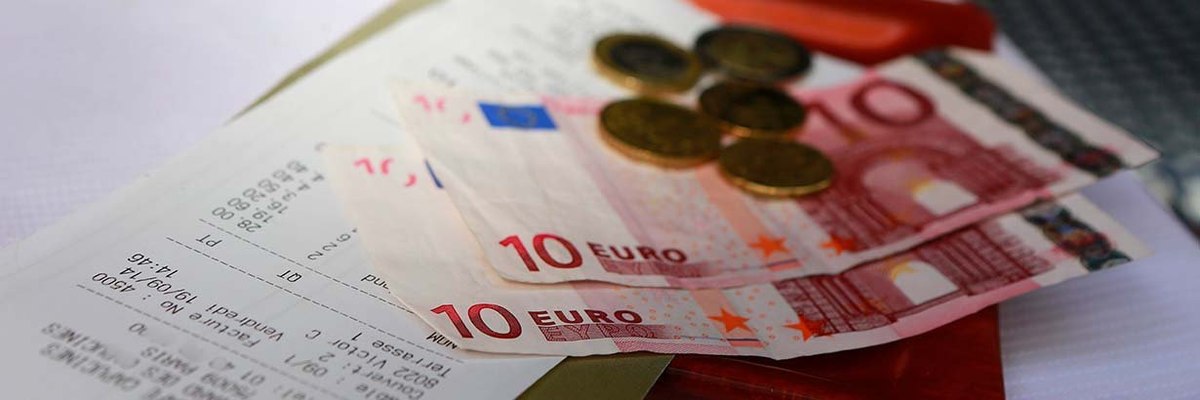Americans will tip poor or terrible restaurant service, while Europeans will not
The expansive US tipping culture is a commonly cited difference between everyday life in America and other parts of the world.
Nevertheless, many Americans would like to change that, with a recent YouGov US study on what foreign ways of doing things Americans would like to adopt showing that 56% of Americans would prefer wait staff to be paid a higher minimum wage that meant people are not expected to tip.
But in the meantime, the culture remains as it is – so how do American practices on tipping compare to those in Europe?
Who do Europeans and Americans tip?
In every country surveyed, the kind of worker most likely to receive a tip is a restaurant waiter or waitress. Americans and Germans are the most likely to do so, with 77% and 78% of diners in each country respectively saying they normally tip waitstaff.
British diners come next, with 59% who ever go to restaurants generally tipping waiters, as do 47% of Spaniards. People in France (37%), Sweden (34%), Italy (27%) and Denmark (24%) are much less likely to leave a tip as a matter of course – however, more than a third in each of these countries (35-40%) say that although they do not typically tip, they might sometimes do so.
In fact, only between 5-33% say they “never” tip restaurant waitstaff, with that figure highest in Denmark (33%) and Italy (32%).
Americans and Germans come top of the tipping tables across all nine of the services we asked about. Most will normally tip hairdressers or barbers, pub or bar staff and taxi drivers – a majority of Americans will also generally tip takeaway delivery drivers and Uber drivers.
By contrast, Danes are consistently the least likely or close-to least likely to leave a tip.
Why do Europeans and Americans tip?
Despite the very different tipping cultures across the countries, the main reason people give for why they tip is the same: that they are rewarding good service. This ranges from 56% of tippers in the USA to 71% in Denmark.
Others say it is because they feel like they have to, e.g. because of social pressure, from 9% of Spanish tippers to 21% in Sweden. Giving tips because people don’t feel like staff are paid enough is lowest among Nordic tippers (8-9%) and highest among American (24%), French (23%) and Italian tippers (also 23%).
Europeans won’t tip terrible or poor restaurant service, but Americans will
While the point of offering a tip is supposed to be as thanks for good service, the results show that many Americans will leave a tip if they receive “poor” or even “terrible” service at a restaurant.
One in five American diners who ever tip, and that have ever received “terrible” service at a restaurant nevertheless say they gave a tip “every time” or “most times” that happened. This includes 15% of those who specifically say the main reason they tip is “to reward good service”. By contrast, just 2-8% of European diners who ever tip have always or most times left a tip upon receiving terrible service.
Only 32% of American diners say they “never” tipped for terrible restaurant service (including 39% of those whose main tipping motivation is to reward good service), in comparison to 57-78% of Europeans.
Likewise, while 28% of American tippers say they tip every time or most times they get poor service, just 2-8% of Europeans do the same. Again, while 52-78% of European tippers never reward a poor dining experience, only 21% of Americans say the same.
When it comes to “average” service, half of Americans (60%) say they leave a tip at least most of the time. In Europe we start to see attitudes differ, with the range expanding from 3% of Spanish tippers giving a little extra for average service to 28% of Germans.
At a “good” level of service, 80% of Americans leave a tip every or most times, with Germans just as likely to say so at 80% (although Americans are more likely to “always” do so, at 59% vs 51%). Two thirds of British tippers will also generally leave a tip in this case (69%), with other countries ranging from 44-46% in Denmark and Italy to 59% in France.
For an “exceptional” level of service, 81% of Americans generally leave a tip (although this represents a ten-point shift from “most times” to “every time” within this group), with 84% of Germans and Britons also normally leaving a tip. Three quarters of Spanish, French and Swedish tippers would do likewise (73-75%), as well as 62-65% of Italians and Danes.
Given that Germans and Americans are about as likely to leave tips as standard at restaurants, these figures highlight a fundamental difference between the two nations’ tipping cultures – in Germany tips appear to be tied directly to good service, whereas in the USA they are not.
How much do Europeans and Americans tip in restaurants?
Among those who ever give tips, the typical tip amount for waitstaff in Europe is either 5% or 10%. Spanish tippers (55%), French (53%) and Italians (46%) are most likely to say they give a 5% tip, while 10% is the most common tip among British (61%), German (52%), Swedish (49%) and Danish tippers (39%). Few (7-16% in each country) say they would normally give a tip of more than this.
Americans are much bigger tippers, with two thirds (67%) saying they would tip an amount higher than 10%. The most common tip amount is 20%, which 26% say would be their normal tip. After that are tips of 15% (by 18% of Americans) and 10% (also by 18%).
Photo: Getty










